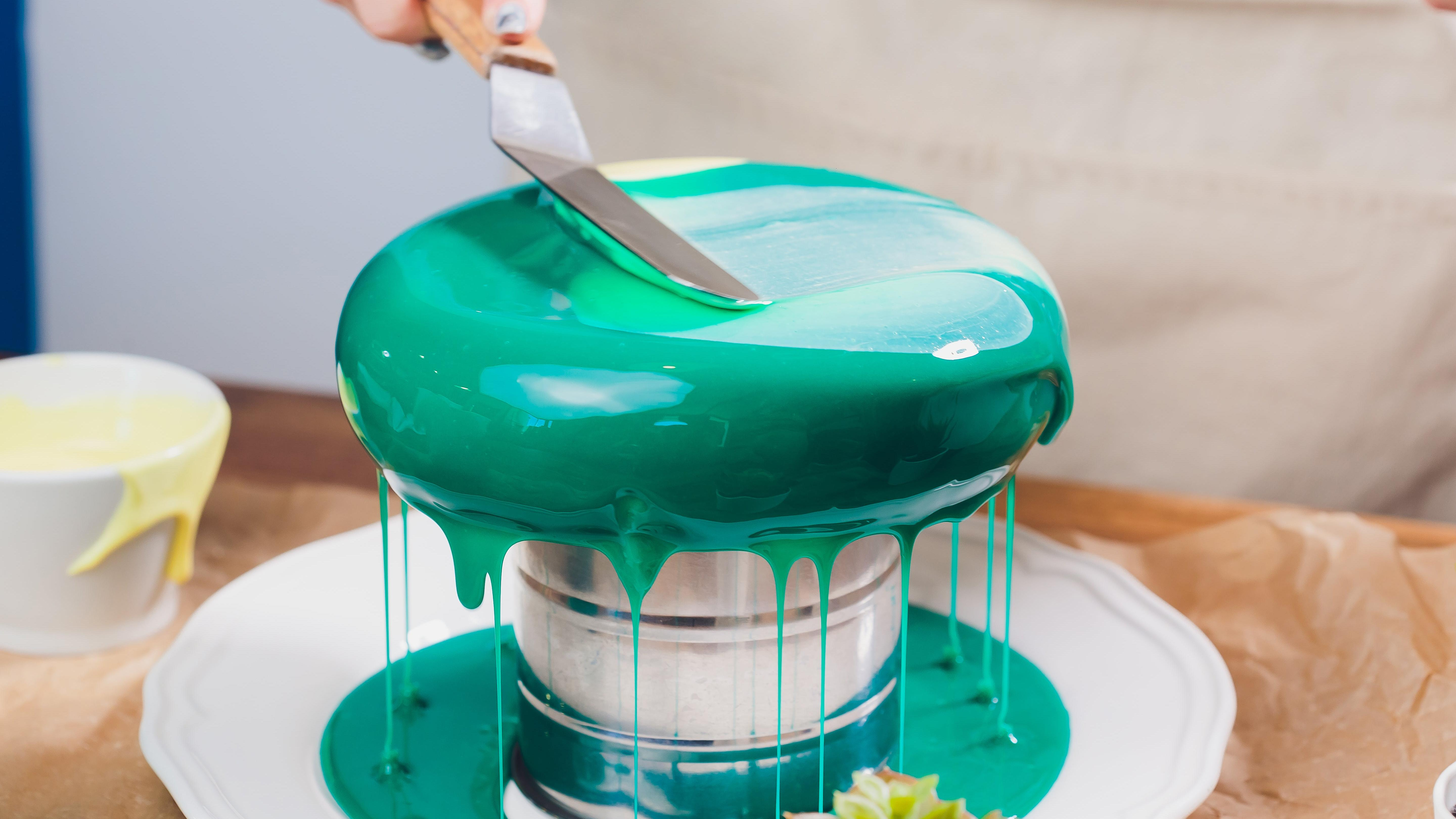Icing, Frosting, Glaze—What's The Difference?
All three can make for a sweet coating, but how can you tell them apart?
We may receive a commission on purchases made from links.
Would the phrase "That's just icing on the cake" have the same meaning if it was "That's just glaze on the cake"? It certainly doesn't have the same ring to it, but what really matters is whether a cake is covered in frosting, icing, or glaze.
Despite the once popular naked cake trend, the spread that covers a cake can completely change the eating experience, so it does matter. Based on ingredients, texture, and the process to make each coating, you could end up with a completely different cake than intended.
What is icing?
Icing and frosting are often used interchangeably—even the website Bakerpedia has the two words listed as synonyms of each other.
However, MasterClass explains icing is made using confectioners' sugar (or powdered sugar) mixed with a liquid (milk or cream, lemon juice, or a liqueur). Icing is used in smaller quantities and is considered a pastry topping that often goes on cookies, cakes, brownies, and other sweets.
The ingredients used to make icing give it a thinner composition that hardens pretty quickly when it gets dry. Because of this, icing is not generally as spreadable as frosting. That's why when you go to a grocery store, icings are usually sold in small tubes for drizzling whereas frosting is sold in larger tubs.
What is frosting?
If you prefer your cake coated in something light and fluffy, then frosting is what would suit it best. This coating is made by whipping together butter and sugar, based on MasterClass's definition of frosting at its most basic level.
In terms of texture, frosting is thick but airy and much more spreadable than icing. This coating can be more easily formed and manipulated into specific designs, and usually goes between the layers of a cake as well as decorating the outside. Although both icing and frosting come in different varieties, it's the latter that relies on the butter to give it a thicker, smoother texture to be used mostly on cakes.
What is a glaze?
Visually, a glaze is pretty easily distinguished from the two previously mentioned spreads. Merriam-Webster defines a glaze as "a liquid preparation applied to food on which it forms a firm glossy coating." Oddly though, glazes are made using regular sugar and a thin liquid which gives it a syrup consistency, notes Imperial Sugar.
Another standout quality for glaze is that it can be used in savory recipes for cooking rather than baking. Ever had a delicious cut of ham with a sweet honey glaze over it? My mouth waters at the thought. But I can't say a cut of meat with a bit of cherry frosting has the same effect on my tastebuds. Whether your baking situation calls for one of these three coatings (or even all three), understanding the differences between them can lead to much better dessert pairings in terms of flavor and texture.
